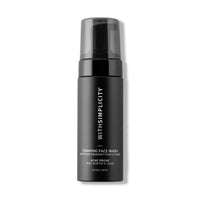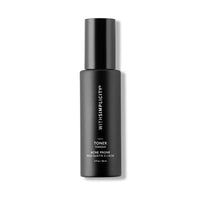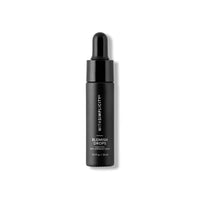Acne is a skin condition affecting many people worldwide. While it’s generally associated with puberty, it can follow individuals well into adulthood. It’s important to understand that not all pimples are the same — some are mainly caused by hormonal changes, while others are triggered by bacteria. Let's dig into the root causes of each type and effective treatment options.
What Is Hormonal Acne?
Hormonal acne is triggered by hormonal changes, particularly a rise in androgens. This process can lead to heightened sebum production, inflammation and changes in skin cell processes, leading to acne formation. It’s commonly seen in teenagers going through puberty and can manifest in many ways, including blackheads, whiteheads, papules, cysts, nodules and pustules.
Blackheads and whiteheads don’t cause inflammation, pain or swelling. Cysts, nodules and pustules manifest as bulging patches on the skin.
Hormonal fluctuations — which can affect both men and women — are the leading cause of this type of acne. An imbalance between estrogen and testosterone can lead to oiliness and clogged pores.
What Is Bacterial Acne?
Unlike hormonal acne, this type of skin issue is triggered by the bacterium Cutibacterium acnes (C. acnes), which triggers an inflammatory reaction in the skin. This bacterium is generally harmless. When a pore becomes blocked with excess oil and dead skin cells, it creates a favorable environment for C. acnes to multiply, causing redness and inflammation.
Bacterial acne can be triggered by several factors:
- Diet: Unhealthy foods can weaken your gut health and skin microbiome, increasing yourrisk of bacterial acne.
- Environmental factors: Habits like improper cleansing, touching your face, and usingcomedogenic or pore-clogging products can spread acne-causing bacteria. Dirty pillows,makeup brushes and contaminated cosmetics can also trigger bacterial acne breakouts.
How to Tell if Your Acne is Hormonal or Bacterial?
Distinguishing between these two types of acne can be challenging since they share appearances. However, some key differences can help you determine the kind of breakout.
- Location of Breakouts: Hormonal acne mainly appears on the cheeks but can also manifest on the lower face, chest,neck and back. Bacterial acne can occur anywhere on the face, particularly in oily areas like theforehead, nose and cheeks.
- Type of Lesions: Deep, painful bumps are usually hormonal acne. Red, inflamed patches with pustules areusually bacterial acne. They may not appear as severely inflamed as hormonal breakouts.
-
Recurrence Patterns: Hormonal acne is more persistent during menstruation. Estrogen and progesterone levels decline before a period, which can trigger sebaceous glands to produce more oil, which resultsin clogged pores and acne. This type of acne may also appear when taking hormonal pills orprogesterone-containing products.
In contrast, bacterial acne depends on external factors, such as diet, skin care habits andhygiene. For instance, it may happen when you leave makeup on your skin during sleep.Makeup can interfere with the skin’s exfoliation process, leading to dead skin cell buildup.
How to Combat Hormonal Acne
Hormonal acne can be more challenging to manage, as uncontrollable factors trigger it. Here are some treatment options to discuss with your physician.
Using natural makeup products means investing in your skin health and contributing to a more sustainable tomorrow. With these tips in mind, you can now switch to more gentle and safe cosmetics.
Tip #1: Balance Hormones Naturally
Many factors affect hormonal fluctuations. Aside from periods and stress, menopause and polycystic ovary syndrome (PCOS) can increase the risk of hormonal acne.
There are many ways to balance hormones naturally. A healthy diet with a focus on the following nutrients may help:
- Healthy fats: Consuming these fats can help stabilize blood sugar levels, preventingspikes and imbalances.
- Protein: This nutrient is essential for building muscle mass, which can improve yourbody’s ability to regulate hormones and blood sugar.
- Phytoestrogens: These plant-derived compounds help with hormonal regulation andreduce the risk of osteoporosis.
Tip #2: Minerals, Vitamins + Supplements
Certain vitamins and minerals can help balance hormones, reduce inflammation, and support skin health. Here's a breakdown of some of a few nutrients for hormonal acne:
- Zinc is one of the most effective minerals for acne, as it helps regulate oil production and reduces inflammation. You can find zinc in foods like oysters, pumpkin seeds, and chickpeas, or take it as a supplement like zinc gluconate or picolinate.
- Omega-3 fatty acids, found in fatty fish, flaxseeds, and chia seeds, are great for reducing inflammation and regulating hormone levels. These essential fats are especially useful for managing hormonal acne, and fish oil supplements can provide an easy way to increase intake.
- Probiotics can also indirectly benefit acne, as a healthy gut microbiome is linked to improved hormonal balance and reduced inflammation. Fermented foods like yogurt and sauerkraut, or probiotic supplements, can help nourish the gut.
How to Combat Bacterial Acne
Managing bacterial acne requires a multifaceted approach that targets excess oil production, bacteria, and clogged pores. Here are some best practices for dealing with bacterial acne:
Tip #1: Consistent Skincare Routine
A consistent skincare routine helps regulate oil production, keeping pores clear and reducing the environment where C. acnes bacteria thrive. Regular use of acne-fighting ingredients like benzoyl peroxide (we prefer to use Tea Tree Oil for a natural alternative) or salicylic acid (found naturally in Willow Bark Extract) can prevent breakouts by targeting bacteria and unclogging pores. Consistency also ensures that the skin adapts to treatments over time, minimizing irritation and maximizing effectiveness.
- Avoid Over-cleansing: Washing your face too often can strip the skin of natural oils, leading to irritation and more oil production. Stick to a consistent routine to keep skin clean without overdoing it.
- Avoid Physical Scrubs: Harsh scrubs or exfoliating brushes can irritate acne-prone skin, spreading bacteria and causing further inflammation.
- Non-Comedogenic Moisturizers: Hydrating the skin is important even if you have oily or acne-prone skin. Use a lightweight, oil-free, non-comedogenic moisturizer, like our Face Jelly, to balance the skin’s moisture without clogging pores.
Tip #2: Lifestyle & Habits
Hygiene and lifestyle habits play a crucial role in managing bacterial acne by influencing factors like oil production, inflammation, and bacteria buildup on the skin.
- Avoid Touching Your Face: Constantly touching or picking at acne can introduce more bacteria, worsen inflammation, and lead to scarring. Keep hands away from the face and avoid popping pimples.
- Clean Pillowcases and Towels: Frequently wash pillowcases, towels, and anything that comes in contact with your face to prevent bacteria from spreading.
- Balanced Diet: A diet rich in fruits, vegetables, and whole grains can promote overall skin health. Some studies suggest limiting dairy and high-glycemic foods (like sugar and refined carbs) may help reduce acne in certain individuals.
Knowing the difference between hormonal and bacterial acne is essential for developing aneffective skin care regimen. While both conditions can be frustrating, several natural treatmentoptions such as lifestyle changes, topical treatments and a good skin care routine can help.With patience and the right approach, you can achieve clearer skin.





